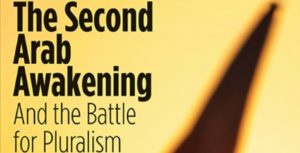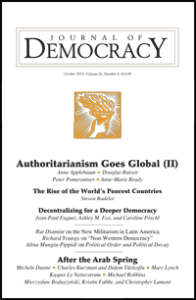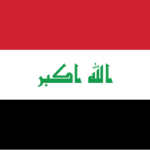A new wave of protests and demonstrations has erupted across the Middle East and North Africa over the past 9 months, the Wilson Center’s Middle East Program observes. In Iraq, Lebanon, Sudan, Algeria, Jordan, and Egypt, these protests were largely triggered by dire socio-economic conditions, corruption and a sense of economic and political disenfranchisement with outright calls for regime change in the case of Algeria, Sudan, and very recently in Lebanon.
 The new wave is focused on the same issues as the initial an Arab Spring, says Marwan Muasher, vice president for studies at Carnegie and author of The Second Arab Awakening and the Battle for Pluralism. But protesters have learned from their mistakes, and are seeking new goals and using new means to achieve real, lasting, regional changes. But what is different this time? And will those differences change the outcome? he asks:
The new wave is focused on the same issues as the initial an Arab Spring, says Marwan Muasher, vice president for studies at Carnegie and author of The Second Arab Awakening and the Battle for Pluralism. But protesters have learned from their mistakes, and are seeking new goals and using new means to achieve real, lasting, regional changes. But what is different this time? And will those differences change the outcome? he asks:
- First, the primary characteristic common to all these protests is the trust gap. In previous protests, including the Arab Spring, people pushed the regime in power to make structural changes to satisfy their demands. Failing that, protesters often turned to opposition leaders to see if they were able to achieve results. But in this wave, the lack of trust in all political leaders has reached the point of no return. ….
- Second, the protests are peaceful, despite the strength of the regimes they face, and those regimes’ willingness to swiftly deploy violence against protesters. In Algeria and Sudan in particular, the military has used brutal and repressive tactics for decades, but the protesters so far have refused to adopt violence in any way. Through their pacifism, the protesters have been able to achieve and maintain broad internal and external support, and the military in both countries was finally forced to listen.
 Third, the protesters are rejecting sectarian divisions in politics that virtually guarantee antidemocratic rule. In Lebanon, deeply entrenched sectarian political systems, where religious or ethnic identity is the basis of politics, create divisive and bitter conditions that erode the national cohesion necessary for democratic reforms {as discussed in the NED’s Journal of Democracy, right]. Unpredictably, Lebanese protesters have adopted not only a peaceful, nonviolent strategy but also a decidedly nonsectarian message for the first time.
Third, the protesters are rejecting sectarian divisions in politics that virtually guarantee antidemocratic rule. In Lebanon, deeply entrenched sectarian political systems, where religious or ethnic identity is the basis of politics, create divisive and bitter conditions that erode the national cohesion necessary for democratic reforms {as discussed in the NED’s Journal of Democracy, right]. Unpredictably, Lebanese protesters have adopted not only a peaceful, nonviolent strategy but also a decidedly nonsectarian message for the first time.
In Iraq and Lebanon, different events sparked the current demonstrations, but protesters in both countries believe their governments are broken. Journalist Pesha Magid, reporting from Baghdad, and special correspondent Jane Ferguson, in Beirut, join PBS Newshour’s Nick Schifrin (above) to discuss economic and political instability in Iraq and Lebanon and how proximity to Iran is looming over both nations.
Lebanon’s protesters demand a technocratic government, but President Aoun’s Free Patriotic Movement, Saad Hariri’s Future Movement, Hezbollah, and the other political parties have no interest in allowing a new system to emerge that undermines their power, meaning a deadlock is likely to endure, adds CSIS analyst Jon Alterman.
Iraq’s protesters are aware that the same small group of factions controls every province, but they split the governorships. Even more, when a governor faces scandal or protests, he is replaced by another member of the kleptocracy, notes Kirk H. Sowell, a political risk analyst and the publisher of the biweekly newsletter Inside Iraqi Politics.
 None of these factors detract from the importance of elections for Iraqi political parties, as winning seats is the gateway to patronage through ministries, executive appointments and contract tenders, he writes for Carnegie’s Sada Journal. But for Iraqis taking to the streets with frustration toward the electoral system itself, the next big question for Iraqi democracy may not be who wins, but whether voters can be convinced it even matters.
None of these factors detract from the importance of elections for Iraqi political parties, as winning seats is the gateway to patronage through ministries, executive appointments and contract tenders, he writes for Carnegie’s Sada Journal. But for Iraqis taking to the streets with frustration toward the electoral system itself, the next big question for Iraqi democracy may not be who wins, but whether voters can be convinced it even matters.
At the Carnegie Endowment’s website, Dalia Ghanem, Loulouwa al-Rachid, and Sabri Benalycherif have published an interesting photo essay on the graffiti of protesters in Algiers and Beirut, where large demonstrations have taken place this year against the countries’ respective governments and political systems.
Join a discussion with a panel of Wilson and regional experts to analyze these events and understand the differences and similarities between the present wave of protests and those that erupted in 2011. RSVP
 Introduction: Merissa Khurma, Project Manager, Middle East Special Initiatives
Introduction: Merissa Khurma, Project Manager, Middle East Special Initiatives
Speakers
Rend Al-Rahim, Former Iraqi Ambassador to the US, Cofounder and President of the Iraq Foundation
 Hussein Abdul-Hussein, Washington Bureau Chief, Al Rai Newspaper
Hussein Abdul-Hussein, Washington Bureau Chief, Al Rai Newspaper
Marina Ottaway, Middle East Fellow, Wilson Center, co-author of “A Tale of Four Worlds: The Arab Region After the Uprisings” (above).
Moderator: David Ottaway, Middle East Fellow, Wilson Center, co-author of “A Tale of Four Worlds: The Arab Region After the Uprisings”
Thursday, November 14, 2019
10:30am – 12:00pm
5th floor Conference Room
Wilson Center
Ronald Reagan Building and
International Trade Center
One Woodrow Wilson Plaza
1300 Pennsylvania Ave, NW
Washington, D.C. 20004
Phone: 202.691.4000







